First Successful Wireline Stress Testing in a Gas Hydrate Reservoir in the Hyuganada Sea, Japan
Abstract
1. Introduction
2. Challenges and Objectives of WFT and Stress Testing
3. Review of Past WFT Cases in Gas Hydrate Operations
3.1. Overview of Past WFT Cases in Gas Hydrate Operations
3.2. Review of Fracture Gradient Measurement by WFT in Gas Hydrate Operations
4. Geologic Conditions
4.1. Regional Geology
4.2. Reservoir Conditions
5. WFT Operation and Data Acquisition
5.1. Operation Preparation
- The potential drift of the wireline cable and tool string owing to ocean currents.
- Compensating for heave without a fixed reference point.
- Successfully driving the tool string into the well.
5.2. Operation Execution
6. Results and Discussion
6.1. Stress Testing by WFT
6.2. Pressure Measurement by a Dual Packer
7. Recommendations
- Implementing a rebound test by adding a sample chamber close to the dual packer to the procedure could help confirm the fracture and fine-tune the closure pressure.
- Conducting additional injection cycles could facilitate the observation of repeated pressure response behaviors, and potentially reduce pressure noise compared with that observed in the initial cycles.
8. Conclusions
Author Contributions
Funding
Data Availability Statement
Acknowledgments
Conflicts of Interest
Nomenclature
| ASR | Anelastic strain recovery |
| BHD | Borehole diameter |
| BPHI | Neutron porosity |
| BRT | below rotary table |
| BU | Buildup |
| CH | Cased hole |
| CHDT | Cased-hole dynamic tester |
| CSG | Casing |
| DD | Drawdown |
| ETIM | Elapsed time |
| ISIP | Instantaneous shut-in pressure |
| LWD | Logging while drilling |
| MDT | Modular formation dynamics tester |
| MRP | Magnetic resonance porosity |
| NMR | Nuclear magnetic resonance |
| OBM | Oil-based drilling mud |
| OH | Open hole |
| PAQP | Quartz gauge pressure |
| POTFR | Total pumpout flow rate |
| RHON | Neutron density |
| ROV | Remotely operated vehicle |
| SQRT | Square root |
| TVD | True vertical depth |
| WFT | Wireline formation tester |
References
- Yamamoto, K.; Terao, Y.; Fujii, T.; Ikawa, T.; Seki, M.; Matsuzawa, M.; Kanno, T. Operational overview of the first offshore production test of methane hydrates in the Eastern Nankai Trough. In Proceedings of the Offshore Technology Conference, Houston, TX, USA, 5–8 May 2014. [Google Scholar]
- Nagano, Y.; Lin, W.; Yamamoto, K. In-situ stress analysis using the anelastic strain recovery (ASR) method at the first offshore gas production test site in the eastern Nankai Trough, Japan. Mar. Pet. Geol. 2015, 66, 418–424. [Google Scholar] [CrossRef]
- Ghezzehei, T.A.; Kneafsey, T.J. Measurements of the Capillary Pressure-Saturation Relationship of Methane Hydrate Bearing Sediments. In Proceedings of the 2010 Offshore Technology Conference, Houston, TX, USA, 3–6 May 2010. [Google Scholar]
- Sakamoto, Y.; Komai, T.; Kawamura, T.; Tenma, N.; Yamaguchi, T. Field Scale Simulation for the Effect of Relative Permeability on Dissociation and Gas Production Behavior during Depressurization Process of Methane Hydrate in Marine Sediments. In Proceedings of the 7th ISOPE Ocean Mining Symposium, Lisbon, Portugal, 1–6 July 2007. [Google Scholar]
- Mohana, L.; Grozic, J.L.H. Prediction Performance of Permeability Models in Gas-Hydrate-Bearing Sands. SPE J. 2013, 18, 274–284. [Google Scholar]
- Yoneda, J.; Takiguchi, A.; Ishibashi, T.; Yasui, A.; Mori, J.; Kakumoto, M.; Aoki, K.; Tenma, N. Mechanical Response of Reservoir and Well Completion of the First Offshore Methane-Hydrate Production Test at the Eastern Nankai Trough: A Coupled Thermo-Hydromechanical Analysis. SPE J. 2019, 24, 531–546. [Google Scholar] [CrossRef]
- McLellan, P.; Gillen, K.; Podetz, C.; Dallimore, S.; Inoue, T.; Hancock, S. In situ stresses in the Mallik area. In Scientific Results from the Mallik 2002 Gas Hydrate Production Research Well Program, Mackenzie Delta, Northwest Territories, Canada, Geological Survey of Canada, Bulletin 585; Geological Survey of Canada: Ottawa, ON, Canada, 2005. [Google Scholar]
- Yamamoto, K.; Yasuda, M.; Kin, C.; Kusaka, K. Application of Wireline Conveyed Through Casing Formation Tester to Methane Hydrate Research in Japan. In Proceedings of the 11th Formation Evaluation Symposium of Japan, Chiba, Japan, 5–6 October 2005. [Google Scholar]
- Boswell, R.; Hunter, R.; Collett, T.; Digert, S.; Hancock, S.; Weeks, M.; Mount Ebert Science Team. Investigation of gas hydrate bearing sandstone reservoirs at the “Mount Elbert” stratigraphic test well, Milne Point, Alaska. In Proceedings of the 6th International Conference on Gas Hydrates (ICGH 2008), Vancouver, BC, Canada, 6–10 July 2008. [Google Scholar]
- Schoderbek, D.; Farrel, H.; Hester, K.; Howard, J.; Raterman, K.; Silpngarmlert, S.; Martin, K.L.; Smith, B.; Klein, P. ConocoPhillips Gas Hydrate Production Test Final Technical Report; Prepared by ConocoPhillips Company for the United States Department of Energy, National Energy Technology Laboratory; ConocoPhillips Company: Houston, TX, USA, 2013. [Google Scholar]
- Fujii, T.; Suzuki, K.; Takayama, T.; Tamaki, M.; Komatsu, Y.; Konno, T.; Yoneda, J.; Yamamoto, K.; Nagao, J. Geological setting and characterization of methane hydrate reservoir distributed at the first offshore production test site on the Daini-Atsumi Knoll in the eastern Nankai Trough, Japan. Mar. Pet. Geol. 2015, 66 Pt 2, 310–322. [Google Scholar] [CrossRef]
- Kumar, P.; Collett, T.; Yadav, U.; Singh, J. Formation pressure and fluid flow measurements in marine gas hydrate reservoirs, NGHP-02 expedition, offshore India. Mar. Pet. Geol. 2019, 108, 609–618. [Google Scholar] [CrossRef]
- Collett, T.; Boswell, R.; Waite, W.; Kumar, P.; Roy, S.; Chopra, K.; Singh, S.; Yamada, Y.; Tenma, N.; Pohlman, J.; et al. India National Gas Hydrate Program Expedition 02 Summary of Scientific Results: Gas hydrate systems along the eastern continental margin of India. Mar. Pet. Geol. 2019, 108, 39–142. [Google Scholar] [CrossRef]
- Komatsu, Y.; Kobayashi, T.; Fujii, T. 3D seismic geomorphology and geologic controls on gas hydrate accumulation mechanism in the Miyazaki-oki forearc basin, Japan. In Proceedings of the AGU Fall Meeting, San Francisco, CA, USA, 14–18 December 2015. [Google Scholar]
- Imai, T.; Tin, A.; Tano, K.; Fujimoto, A.; Ohtsuki, S.; Otomo, S.; Shimoda, N.; Yoshii, T.; Sakata, R.; Suzuki, K.; et al. Data Acquisition of Logging While Drilling at the New Gas Hydrate Reservoir in Hyuganada sea, Japan. In Proceedings of the 10th International Conference on Gas Hydrates (ICGH10), Singapore, 9–14 July 2023. [Google Scholar]
- Carnegie, A.; Thomas, M.; Efnik, M.S.; Hamawi, M.; Akbar, M.; Burton, M. An Advanced Method of Determining Insitu Reservoir Stresses: Wireline Conveyed Micro-Fracturing. In Proceedings of the Abu Dhabi International Petroleum Exhibition and Conference, Abu Dhabi, United Arab Emirates, 13–16 October 2002. [Google Scholar]
- Barree, R.D.; Barree, V.L.; Craig, D.P. Holistic Fracture Diagnostics. In Proceedings of the Rocky Mountain Oil & Gas Technology Symposium, Denver, CO, USA, 16–18 April 2007. [Google Scholar]

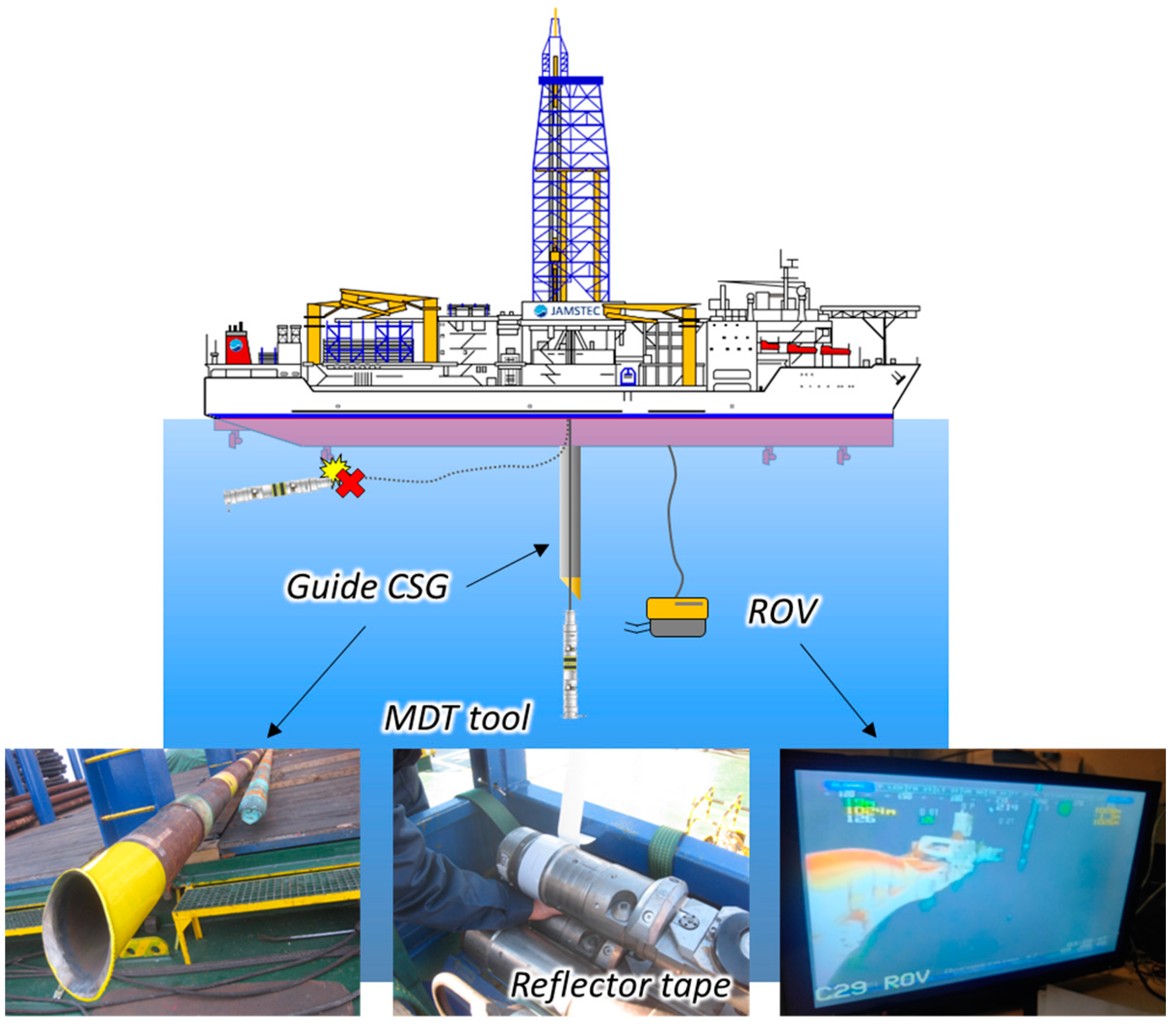
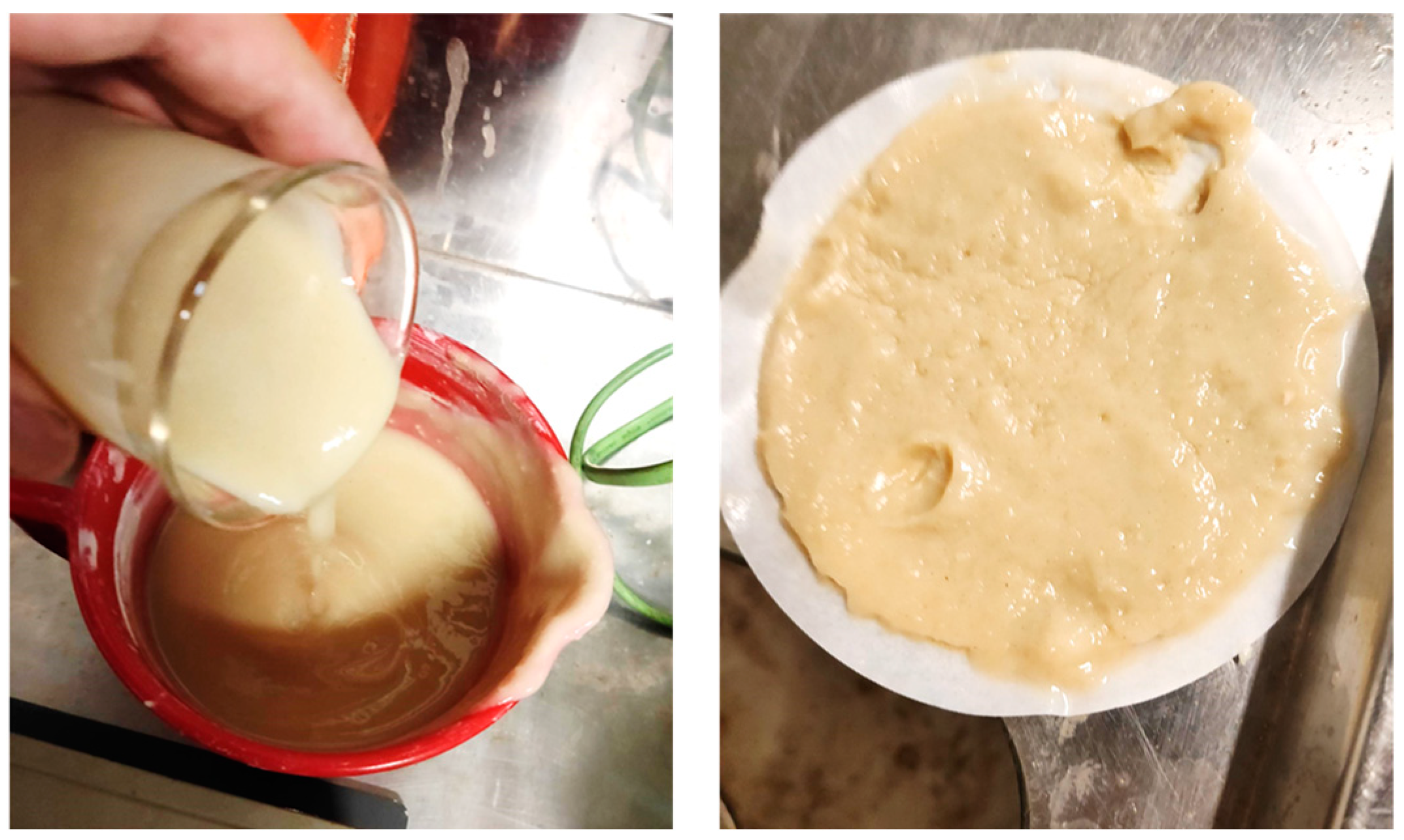

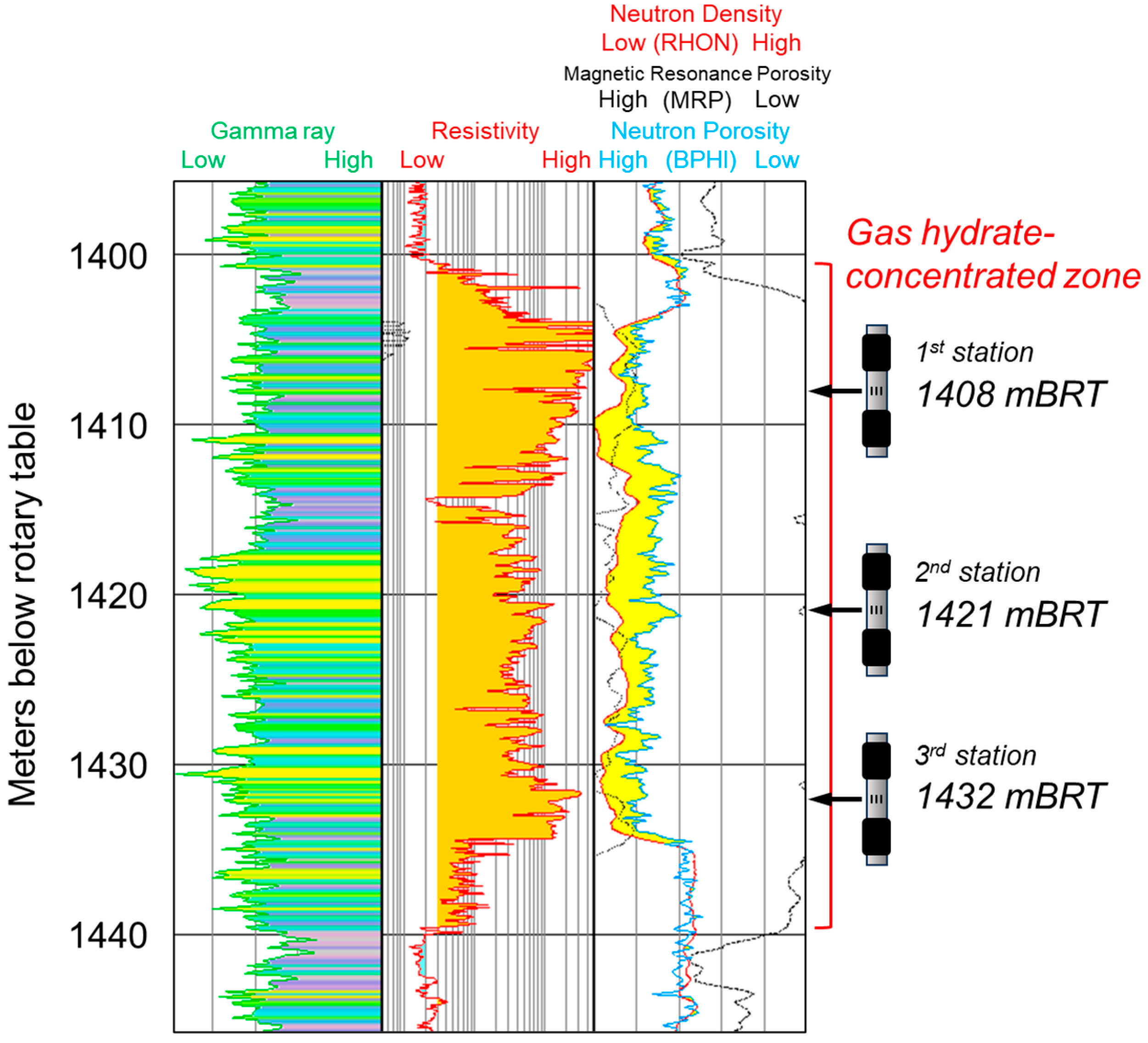

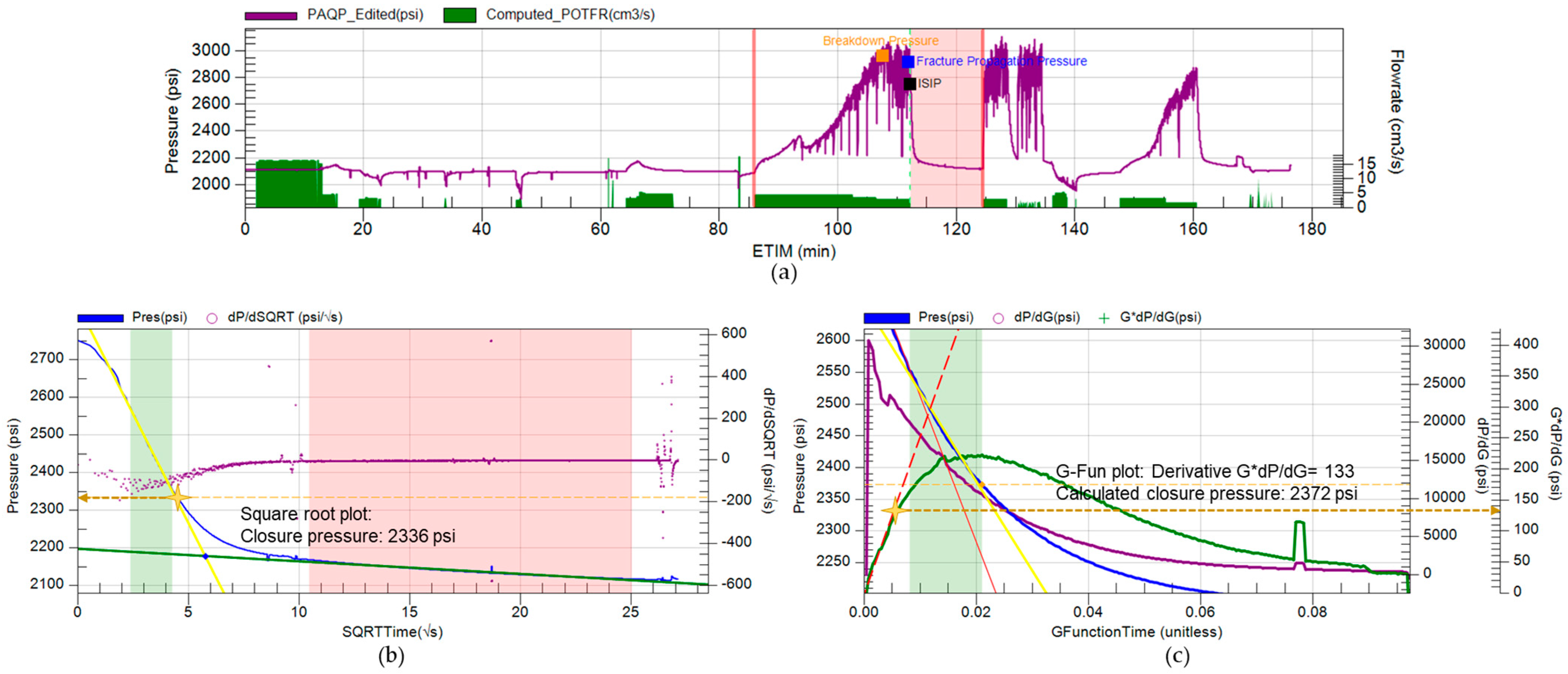
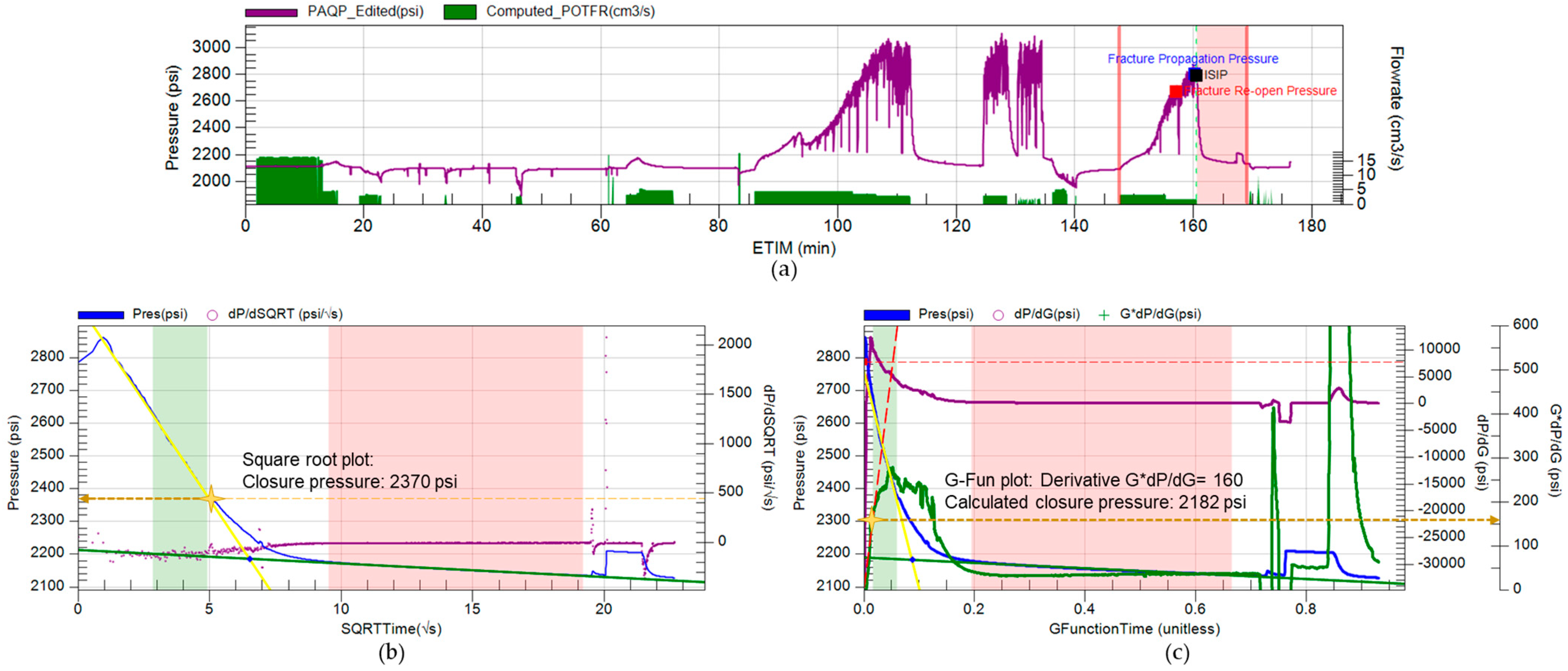
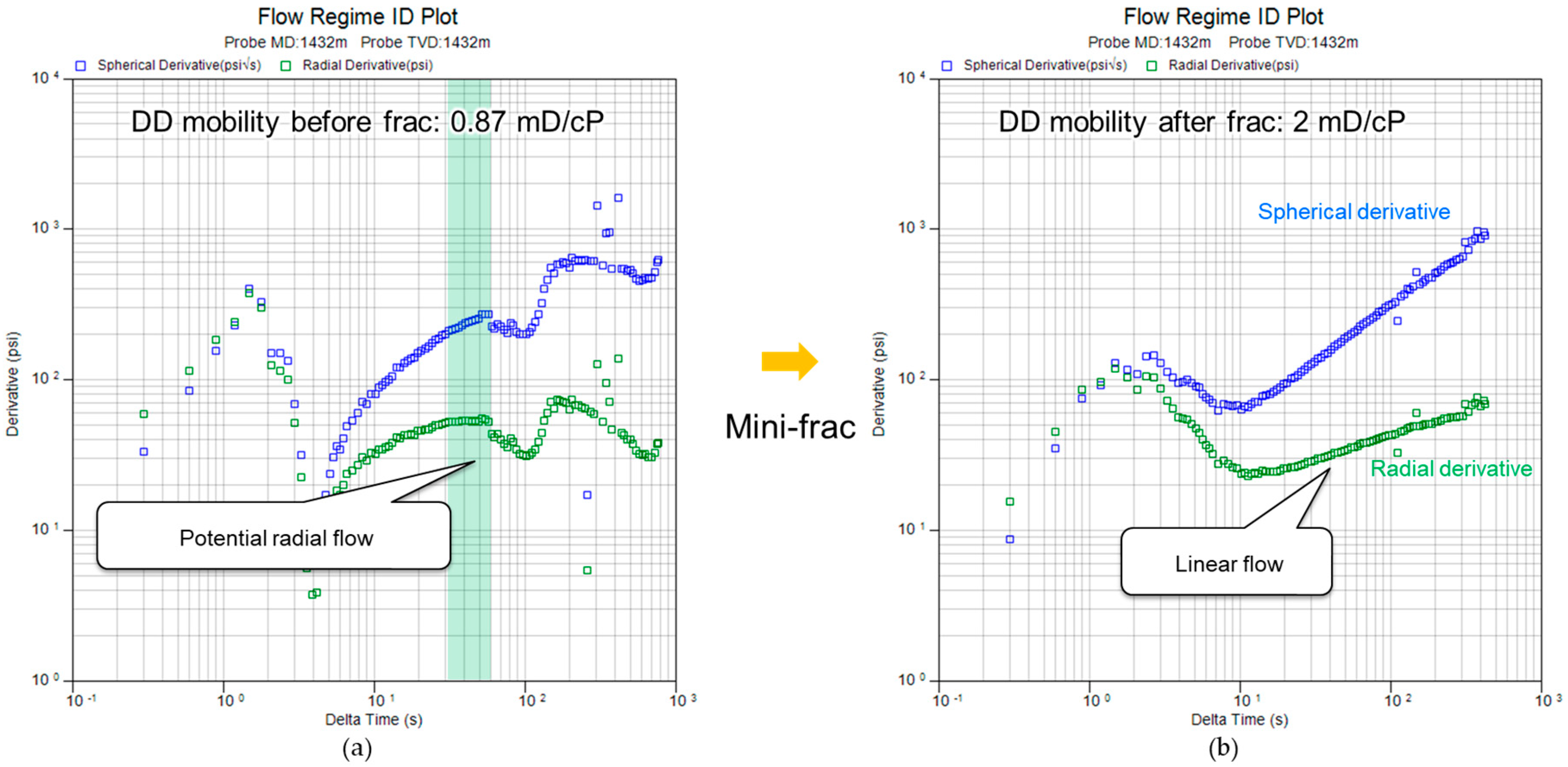
| Year | 2004 | 2004 | 2007 | 2011 | 2012 | 2015 | 2022 | |
|---|---|---|---|---|---|---|---|---|
| Site | Mallik, Canada | Daini-Atsumi, Japan | North slope, Alaska | North slope, Alaska | Daini-Atsumi, Japan | KG Basin, India | Hyuganada, Japan | |
| Land | Offshore | Land | Land | Offshore | Offshore | Offshore | ||
| Well name | 5L-38 | No.31 A1-E | Mt. Elbert Strat. | Iġnik Sikumi #1 | AT1-MC | NGHP-02-23-CNGHP-02-09-D | HY1-L2 | |
| Well type | Cased-hole | Cased-hole | Open-hole | Open-hole | Cased-hole | Open-hole | Open-hole | |
| Tool | WFT | CH WFT | WFT | WFT | CH WFT | WFT | WFT | |
| Objectives | Mobility | ✔ | ✔ | ✔ | ✔ | ✔ | ✔ | ✔ |
| Formation pressure | ✔ | ✔ | ✔ | ✔ | ✔ | ✔ | ✔ | |
| Sampling | ✔ | ✔ | ✔ | ✔ | - | ✔ | - | |
| Fracture gradient | ✔ | ✔ | - | ✔ | - | - | ✔ | |
| Tool Specification | Temp Max (degC) | Min BHD * (in) | Max BHD * (in) | Differential Pressure @ BHD * (psi) |
| Dual Packer | 175 | 7.875 | 9.625 | 4500 psi @ 350 degF |
| * BHD: Borehole diameter | ||||
| Gauge | Temp Max (degC) | Pressure Max (psi) | Accuracy | Resolution (psi) |
| Quartz Gauge | 175 | 15,000 | 2.0 psi + 0.01% of reading | 0.01 |
| Test Depth (mBRT) | Cycle | Breakdown Pressure (psi) | Fracture Reopen Pressure (psi) | ISIP (psi) | SQRT Closure Pressure (psi) | G-function Closure Pressure (psi) |
|---|---|---|---|---|---|---|
| 1408 | 3 | 3273 | __ | 2855 | 2269 | 2356 |
| 1421 | 1 | 3753 | __ | 3282 | 2510 | 2653 |
| 1432 | 2 | 2957 | __ | 2750 | 2336 | 2372 |
| 5 | __ | 2700 | 2787 | 2370 | 2182 |
| Test Depth (mBRT) | Drawdown 1 Mobility (mD/cP) | Last Buildup Pressure (psi) | Drawdown 2 Mobility (mD/cP) | Last Buildup Pressure (psi) | Drawdown 3 Mobility (mD/cP) | Last Buildup Pressure (psi) |
|---|---|---|---|---|---|---|
| 1408 | 3.75 | 2062.85 | 1.85 | 2057.30 | __ | __ |
| 1421 | 1.97 | 2084.45 | 0.85 | 2083.42 | __ | __ |
| 1432 | 2.45 | 2096.55 | 0.82 | 2096.12 | 0.87 | 2093.63 |
Disclaimer/Publisher’s Note: The statements, opinions and data contained in all publications are solely those of the individual author(s) and contributor(s) and not of MDPI and/or the editor(s). MDPI and/or the editor(s) disclaim responsibility for any injury to people or property resulting from any ideas, methods, instructions or products referred to in the content. |
© 2024 by the authors. Licensee MDPI, Basel, Switzerland. This article is an open access article distributed under the terms and conditions of the Creative Commons Attribution (CC BY) license (https://creativecommons.org/licenses/by/4.0/).
Share and Cite
Ohtsuki, S.; Gao, B.; Yoshii, T.; Maehara, Y.; Watanabe, D.; Kanno, T.; Fan, Z. First Successful Wireline Stress Testing in a Gas Hydrate Reservoir in the Hyuganada Sea, Japan. Energies 2024, 17, 2610. https://doi.org/10.3390/en17112610
Ohtsuki S, Gao B, Yoshii T, Maehara Y, Watanabe D, Kanno T, Fan Z. First Successful Wireline Stress Testing in a Gas Hydrate Reservoir in the Hyuganada Sea, Japan. Energies. 2024; 17(11):2610. https://doi.org/10.3390/en17112610
Chicago/Turabian StyleOhtsuki, Satoshi, Bei Gao, Takanao Yoshii, Yuki Maehara, Daigoro Watanabe, Takayuki Kanno, and Zhaoya Fan. 2024. "First Successful Wireline Stress Testing in a Gas Hydrate Reservoir in the Hyuganada Sea, Japan" Energies 17, no. 11: 2610. https://doi.org/10.3390/en17112610
APA StyleOhtsuki, S., Gao, B., Yoshii, T., Maehara, Y., Watanabe, D., Kanno, T., & Fan, Z. (2024). First Successful Wireline Stress Testing in a Gas Hydrate Reservoir in the Hyuganada Sea, Japan. Energies, 17(11), 2610. https://doi.org/10.3390/en17112610






